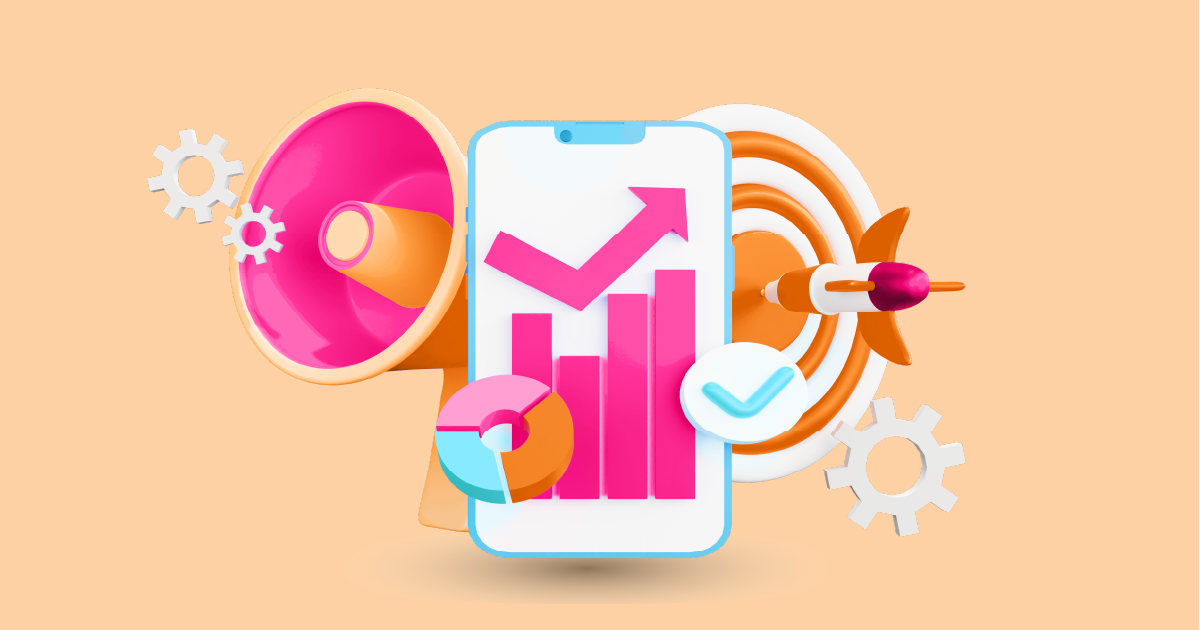In today’s digital age, businesses are increasingly turning to online listening tools to understand and analyze conversations happening on the internet. These tools offer invaluable insights into consumer sentiment, market trends, and competitor activities. In this article, we’ll explore the world of online listening tools, their significance, types, benefits, and best practices for effective utilization.
Understanding the Importance of Online Listening

1. Why is Online Listening Essential?
Online listening allows businesses to tune into conversations happening across various online platforms, including social media, forums, blogs, and news sites. By monitoring these conversations, companies can gain a deeper understanding of their audience’s needs, preferences, and pain points.
2. How Online Listening Tools Work
Online listening tools use advanced algorithms to crawl the web and gather data from millions of sources. They then analyze this data to provide actionable insights, such as consumer sentiment, brand mentions, and emerging trends. This real-time monitoring enables businesses to stay ahead of the curve and make informed decisions.
Types of Online Listening Tools
1. Social Media Monitoring Tools
These tools track mentions of your brand, products, or keywords across social media platforms like Twitter, Facebook, Instagram, and LinkedIn. They help you gauge brand sentiment, identify influencers, and monitor competitor activities.
2. Brand Monitoring Tools
Brand monitoring tools focus on tracking brand mentions and sentiment across the web, including news sites, blogs, and review platforms. They provide a comprehensive overview of your brand’s online reputation and help you address any negative feedback or PR crises.
3. Sentiment Analysis Tools
Sentiment analysis tools use natural language processing (NLP) to analyze the tone and emotion behind online conversations. They categorize mentions as positive, negative, or neutral, allowing businesses to gauge customer sentiment and tailor their marketing strategies accordingly.
5. Competitor Analysis Tools
Competitor analysis tools help businesses keep tabs on their competitors’ online activities, including social media campaigns, product launches, and customer feedback. By monitoring competitor strategies, companies can identify gaps in the market and capitalize on new opportunities.
Benefits of Using Online Listening Tools
1. Enhancing Customer Experience
Online listening tools enable businesses to proactively address customer issues and concerns, thereby improving overall satisfaction and loyalty. By promptly responding to feedback and resolving complaints, companies can build stronger relationships with their customers.
2. Improving Brand Reputation
By monitoring brand mentions and sentiment, businesses can identify and address any negative publicity or PR crises before they escalate. This proactive approach to reputation management helps safeguard brand integrity and maintain customer trust.
3. Identifying Market Trends
Online listening tools provide valuable insights into emerging trends, consumer preferences, and market dynamics. By monitoring relevant keywords and topics, businesses can spot opportunities for innovation and stay ahead of competitors.
How to Choose the Right Online Listening Tool
1. Features to Consider
When selecting an online listening tool, consider factors such as data coverage, sentiment accuracy, real-time monitoring, and analytics capabilities. Choose a tool that aligns with your specific business goals and requirements.
2. Budget Considerations
Online listening tools come in a range of price points, from free versions with limited features to enterprise-level solutions with advanced functionalities. Evaluate your budget and choose a tool that offers the best value for money.
3. User-Friendly Interface
Look for an online listening tool with an intuitive interface and customizable dashboard. Ease of use is crucial for ensuring widespread adoption among team members and maximizing the tool’s effectiveness.
Popular Online Listening Tools
AIM Insights
AIM Insights is a comprehensive online listening tool that monitors mentions of your brand, competitors, and industry keywords across all social media platforms. It offers real-time alerts, sentiment analysis, and customizable reports.
Brand24
Brand24 is another popular online listening tool that tracks brand mentions, sentiment, and social media reach. It provides in-depth analytics, influencer identification, and competitive benchmarking.
Hootsuite
Hootsuite is a social media management platform that includes robust monitoring and analytics features. It allows you to schedule posts, engage with your audience, and track key metrics across multiple social networks.
Sprout Social
Sprout Social offers a suite of social media management and listening tools designed to help businesses grow their online presence. It provides detailed insights, collaborative features, and customizable reporting.
BuzzSumo
BuzzSumo is a content discovery and monitoring tool that helps businesses identify trending topics, analyze competitor content, and track social media performance. It offers valuable insights for content marketers and SEO professionals.
Best Practices for Effective Online Listening
1. Set Clear Objectives
Before diving into online listening, define your goals and objectives. Whether it’s improving customer service, monitoring brand reputation, or identifying market trends, having a clear purpose will guide your strategy and metrics.
2. Monitor Relevant Keywords
Identify the keywords and topics relevant to your industry, brand, and target audience. Use online listening tools to track these keywords across various platforms and stay informed about conversations that matter to your business.
3. Engage with Your Audience
Online listening is not just about monitoring; it’s also about engaging with your audience. Respond to comments, address feedback, and participate in conversations to build relationships and foster brand advocacy.
Challenges and Limitations
1. Language and Cultural Barriers
Online listening tools may struggle to accurately interpret slang, sarcasm, or cultural nuances, particularly in multilingual environments. Businesses must account for these challenges when analyzing sentiment and context.
2. Data Privacy Concerns
Collecting and analyzing vast amounts of online data raises concerns about user privacy and data security. Businesses must adhere to strict regulations and ethical guidelines to protect customer information and maintain trust.
3. Accuracy of Sentiment Analysis
Sentiment analysis algorithms are not infallible and may misinterpret or misclassify emotions in text. Human oversight and validation are essential to ensure the accuracy and reliability of sentiment analysis results.
Future Trends
Artificial Intelligence Integration
Advancements in artificial intelligence (AI) are poised to revolutionize online listening, enabling more accurate sentiment analysis, predictive insights, and automated response capabilities.
Predictive Analytics
Predictive analytics will allow businesses to forecast trends, anticipate customer needs, and proactively address potential issues before they arise. This proactive approach will give companies a competitive edge in the fast-paced digital landscape.
Cross-platform Integration
As online conversations continue to fragment across various platforms and channels, there will be a growing need for cross-platform integration in online listening tools. Seamless data aggregation and analysis across multiple sources will become essential for comprehensive insights.
Conclusion
Online listening tools have become indispensable assets for businesses looking to stay competitive in today’s digital marketplace. By harnessing the power of these tools, companies can gain valuable insights, enhance customer experiences, and drive strategic decision-making. As technology continues to evolve, the future of online listening promises even greater opportunities for innovation and growth.
For a firsthand experience of how online listening tools can transform your business, request a demo from AIM Technologies today. Discover how our advanced features and intuitive interface can help you unlock actionable insights and stay ahead of the curve in your industry.
FAQs
1. How do online listening tools differ from social media monitoring tools?
- Online listening tools encompass a broader range of sources beyond social media, including news sites, blogs, forums, and review platforms. They provide comprehensive insights into online conversations, sentiment analysis, and market trends, whereas social media monitoring tools focus primarily on social media platforms.
2. Can online listening tools help businesses identify influencers?
- Yes, many online listening tools offer influencer identification features, allowing businesses to identify key influencers within their industry or niche. These influencers can then be engaged for collaborations, endorsements, or promotional activities.
3. Are online listening tools only beneficial for large corporations, or can small businesses also leverage them?
- Online listening tools are beneficial for businesses of all sizes, from startups to multinational corporations. Small businesses can use these tools to monitor brand mentions, track competitor activities, and gain insights into customer sentiment without the need for extensive resources or budgets.
4. How often should businesses review the data collected by online listening tools?
- The frequency of data review depends on the specific goals and objectives of the business. Some companies may choose to review data in real time to address immediate issues or opportunities, while others may conduct periodic reviews to track long-term trends and performance metrics.
5. Are there any ethical considerations businesses should be aware of when using online listening tools?
- Yes, businesses must adhere to ethical guidelines and privacy regulations when using online listening tools to gather and analyze data. This includes obtaining consent from individuals before collecting their data, ensuring data security and confidentiality, and being transparent about the purpose of data collection and usage.




